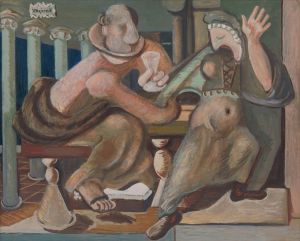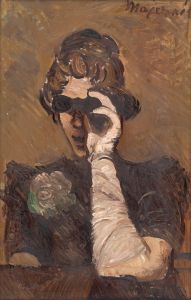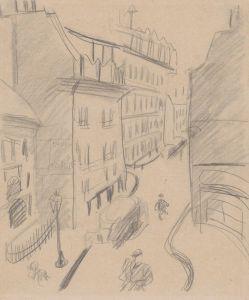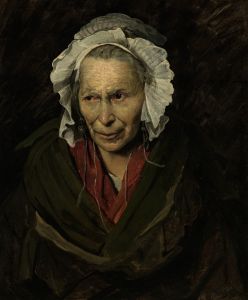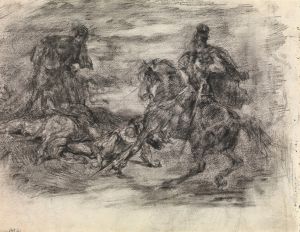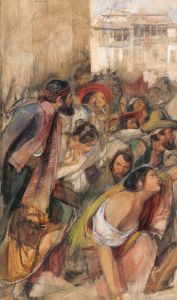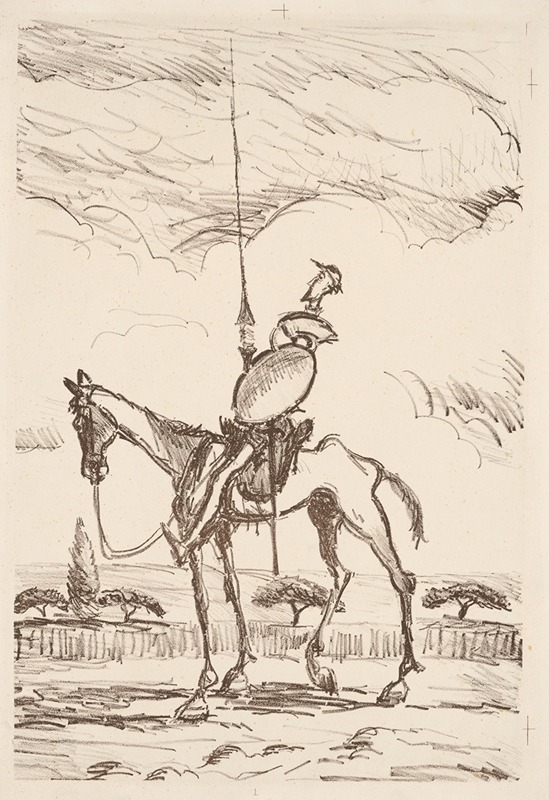
Don Quijote
A hand-painted replica of Cyprián Majerník’s masterpiece Don Quijote, meticulously crafted by professional artists to capture the true essence of the original. Each piece is created with museum-quality canvas and rare mineral pigments, carefully painted by experienced artists with delicate brushstrokes and rich, layered colors to perfectly recreate the texture of the original artwork. Unlike machine-printed reproductions, this hand-painted version brings the painting to life, infused with the artist’s emotions and skill in every stroke. Whether for personal collection or home decoration, it instantly elevates the artistic atmosphere of any space.
Cyprián Majerník was a Slovak painter known for his expressive and often melancholic style, which frequently depicted themes of struggle and heroism. One of his notable works is "Don Quijote," a painting that captures the essence of the legendary literary character Don Quixote from Miguel de Cervantes' classic novel "Don Quixote." Majerník's interpretation of this iconic figure reflects his unique artistic vision and the broader cultural and historical context of his time.
Majerník was born on November 24, 1909, in Veľké Kostoľany, then part of the Austro-Hungarian Empire, and he later became an influential figure in Slovak art. He studied at the Academy of Fine Arts in Prague, where he was exposed to various artistic movements and developed his distinctive style. His work often conveyed a sense of existential struggle, which resonated with the turbulent times he lived through, including the rise of totalitarian regimes in Europe.
The painting "Don Quijote" by Majerník is a poignant representation of the idealistic and somewhat tragic figure of Don Quixote, the self-proclaimed knight-errant who embarks on a quest to revive chivalry and justice. Majerník's portrayal is characterized by a sense of introspection and melancholy, capturing the duality of Quixote's character as both a dreamer and a figure of ridicule. This duality is central to Cervantes' novel and is skillfully rendered in Majerník's work.
Majerník's "Don Quijote" is notable for its use of color and composition, which contribute to the emotional depth of the painting. The artist employs a muted color palette, with shades of gray and brown dominating the canvas, creating a somber and reflective mood. The figure of Don Quixote is often depicted with elongated features and a gaunt appearance, emphasizing his otherworldly and quixotic nature. This stylistic choice aligns with Majerník's broader artistic approach, which often highlighted the inner turmoil and resilience of his subjects.
The painting reflects the broader cultural and political climate of the time, as Majerník created much of his work during the interwar period and World War II. The themes of struggle and idealism in "Don Quijote" can be seen as a reflection of the artist's own experiences and the challenges faced by individuals in a rapidly changing world. Majerník's work often conveyed a sense of empathy for those who, like Don Quixote, pursued noble ideals in the face of adversity.
Cyprián Majerník's contribution to Slovak art is significant, and his interpretation of Don Quixote remains an important part of his artistic legacy. His ability to capture the complexity of human emotions and the timeless nature of Cervantes' character has ensured that "Don Quijote" continues to resonate with audiences. Majerník passed away on July 4, 1945, in Prague, leaving behind a body of work that continues to be celebrated for its emotional depth and artistic integrity.







